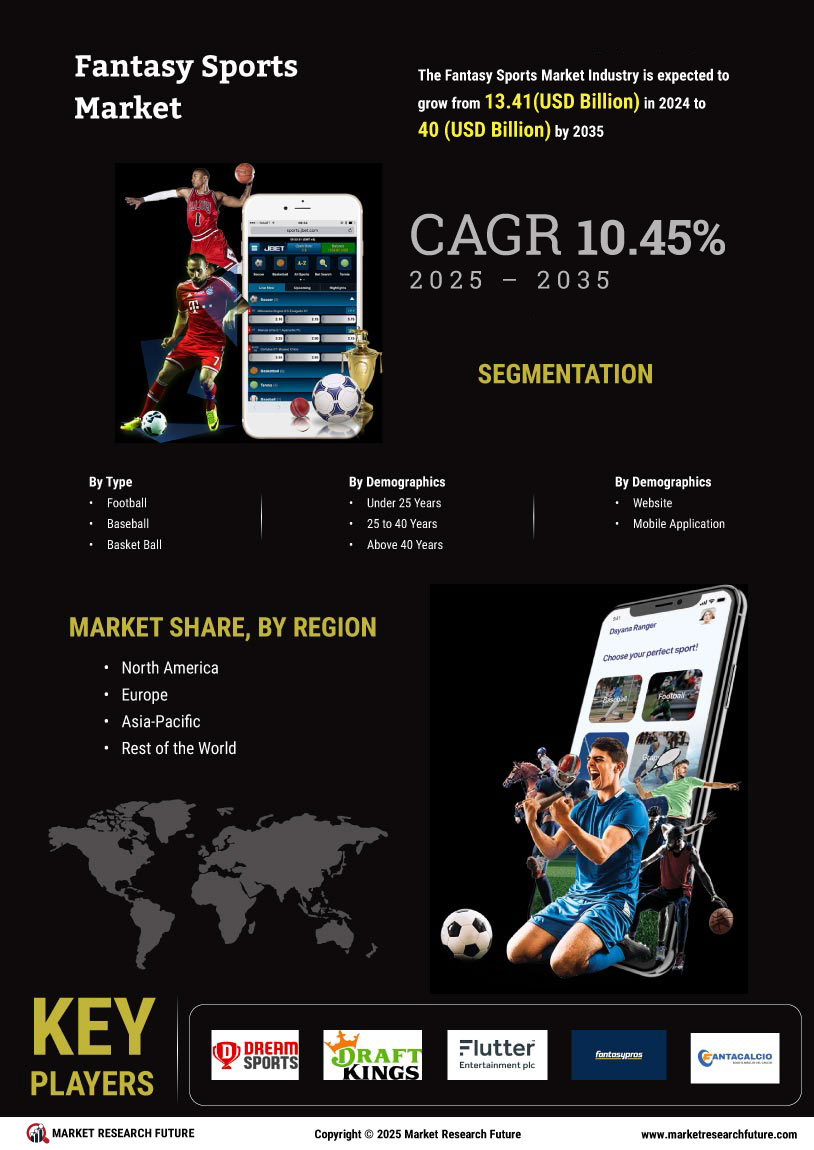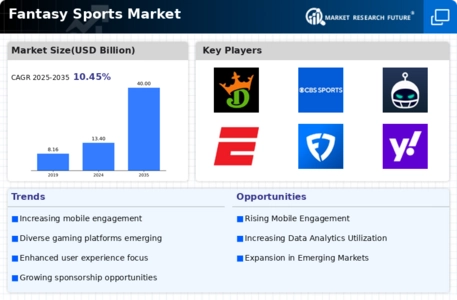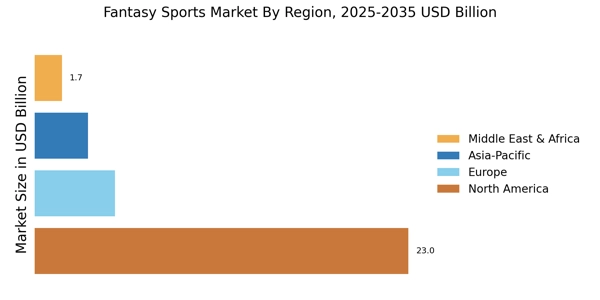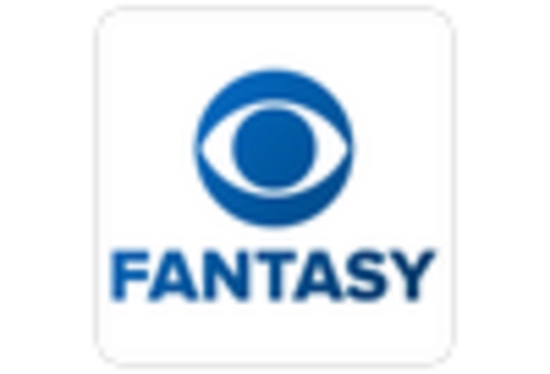Diverse Revenue Streams
The Fantasy Sports Market is diversifying its revenue streams, moving beyond traditional entry fees and advertising. Companies are increasingly exploring partnerships with brands for sponsorships, merchandise sales, and premium subscription models. This shift is indicative of a broader trend where platforms seek to create multiple income sources to enhance financial stability. For instance, premium subscriptions that offer exclusive content and features are gaining traction, with some platforms reporting a 15% increase in revenue from this segment. Additionally, collaborations with sports leagues and teams for branded fantasy leagues are becoming more common, providing unique experiences for users. This diversification not only strengthens the financial foundation of companies within the Fantasy Sports Market but also enhances user engagement through varied offerings.
Emerging Markets Expansion
The Fantasy Sports Market is witnessing a notable expansion into emerging markets, where sports enthusiasm is on the rise. Countries in Asia and Latin America are increasingly adopting fantasy sports platforms, driven by a growing middle class and increased internet accessibility. For instance, the number of fantasy sports users in these regions is projected to grow by over 30% annually, indicating a robust market potential. This expansion is further fueled by local partnerships and tailored offerings that resonate with regional sports preferences. As these markets mature, they present lucrative opportunities for companies in the Fantasy Sports Market to diversify their user base and revenue streams. The influx of new users from these regions may also lead to innovative game formats and localized content, enhancing the overall appeal of fantasy sports.
Increased Mobile Penetration
The rise in mobile device usage has transformed the Fantasy Sports Market, enabling users to engage with fantasy sports on-the-go. As of 2025, mobile devices account for over 70% of all fantasy sports interactions, indicating a shift towards mobile-first platforms. This trend is likely to continue, as advancements in mobile technology enhance user experience through improved graphics and faster load times. The convenience of mobile applications allows users to draft teams, make trades, and monitor player performance in real-time, thereby increasing user engagement. Consequently, companies within the Fantasy Sports Market are investing heavily in mobile app development to capture this growing audience. The integration of features such as live scoring and push notifications further enhances user retention, suggesting that mobile penetration is a critical driver for the industry's growth.
Enhanced User Engagement Strategies
User engagement strategies are evolving within the Fantasy Sports Market, as companies seek to retain and attract players. Innovative features such as gamification, social sharing, and interactive content are being implemented to enhance user experience. For example, the introduction of leaderboards, challenges, and rewards systems has proven effective in increasing user participation. Data suggests that platforms employing these strategies see a 25% increase in user retention rates. Furthermore, the integration of social media functionalities allows users to share their achievements and compete with friends, fostering a sense of community. As competition intensifies, companies in the Fantasy Sports Market are likely to continue refining their engagement strategies to maintain user interest and loyalty.
Technological Advancements in Data Analytics
Technological advancements in data analytics are reshaping the Fantasy Sports Market, providing users with deeper insights and enhanced decision-making capabilities. The integration of artificial intelligence and machine learning algorithms allows platforms to analyze vast amounts of player data, offering predictive analytics that can inform user strategies. As of 2025, approximately 60% of fantasy sports platforms utilize advanced analytics tools, indicating a significant trend towards data-driven decision-making. This capability not only improves user experience but also increases the competitiveness of the platforms. Users are more likely to engage with platforms that provide sophisticated analytics, as it enhances their chances of success. Consequently, the emphasis on data analytics is likely to remain a pivotal driver in the evolution of the Fantasy Sports Market.


















Leave a Comment